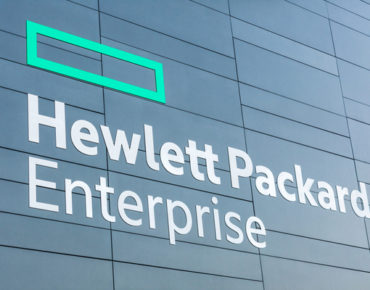HPE Unveils Edge-to-Cloud Adoption Framework to Help Enterprises Assess Cloud Strategies

For many enterprises, managing their large stores of critical company data across multiple locations, from on-premises to various destinations in the cloud, can be difficult and precarious.
To make it less complicated, HPE has introduced its new HPE Edge-to-Cloud Adoption Framework, which is designed to allow organizations to assess the maturity levels of their infrastructures across all domains, while benchmarking their configurations against peers and other industry models. The new cloud adoption framework also aims to help enterprises develop actionable roadmaps to meet their goals on their path toward modernization of their IT and cloud systems.
The framework works with private cloud, public cloud and the edge to help companies improve their operations.
The new tool was introduced in a Sept. 28 blog post by Keith White, senior vice president and general manager of HPE’s GreenLake cloud services commercial business group.
“Unlike other frameworks, which are largely focused on transitioning to public cloud environments, our framework specializes in broader transformations across private cloud, public cloud and the edge,” wrote White. “It combines HPE’s long expertise in delivering solutions for any environment, from edge-to-cloud, leadership in services, and proven transformation stories to meet any business need for customers across the globe.”
The HPE Edge-to-Cloud Adoption Framework came about through what White described as hundreds of successful customer engagements where HPE identified critical areas that enterprises must evaluate and measure to execute effective cloud operating models. “These domains, which include strategy and governance, people, operations, innovation, applications, DevOps, data and security, have formed the core of the HPE Edge-to-Cloud Adoption Framework,” he wrote.
“Organizations, large and small, want to distribute their workloads across multiple cloud environments to unlock value where data is sourced to increase agility and accelerate innovation,” said White. “They also seek advice and best practices on how to effectively do this to achieve superior business results, while avoiding costly pitfalls.”
In a live online announcement about the new framework and other HPE GreenLake service additions, Antonio Neri, the company’s president and CEO, said the framework addresses customer needs to understand their cloud progress over time so they can better evaluate the steps they still must take.
“Our customers love this because it brings a critical element of measurability into the work of transformation,” said Neri. “Our consulting services have delivered results again and again and again for our customers.”
For companies already strained by the COVID-19 pandemic of the last 20 months, the framework is a new tool that can help them gain new business insights, he said.
“Every enterprise has a board-level mandate to use data as a digital advantage whether to create new customer experiences, cut operational costs by digitizing existing processes, or to create new revenue opportunities for the company,” said Neri.
HPE's GreenLake is an infrastructure as-a-service offering for customer workloads, whether they are on-premises, managed in a pay-per-use model at the edge, in colocations or in a customer's data center, according to the company.
R. Ray Wang, principal analyst and founder of Constellation Research, Inc., told EnterpriseAI that with the new framework HPE is giving customers “a single pane of glass whether they are on-premises, at the edge or in the cloud to manage compute, storage and data.”
For HPE, “this is about managing the entire enterprise for clients,” Wang said of the new GreenLake offering. “For clients, this represents a path to the cloud at their own pace, based on the customer’s cost benefit analysis and overall business strategy for transformation.”
The framework will allow cloud users to see what they are doing and what they still need to do, he added. “Customers feel that the cloud vendors are pressuring to move everything into the cloud, often at times more costly budgets than being on-premises. Customers are seeking choices, and this is what HPE GreenLake has been about.”
Wang said he is hearing more lately about customers who are pulling back from full all-in-the-cloud strategies as they differentiate which workloads, data and systems should be moved into the cloud. “This is why every public cloud player has been supporting hybrid strategies,” he said. “HPE’s approach is allowing customers more choices in when, how and where they deploy.”
Another analyst, Rob Enderle of Enderle Group, said the new framework “keeps HPE on the map at scale and allows them to differentiate nicely against the cloud providers with an on-premises alternative, strengthening IT control while providing better overall balance between the hybrid elements.”
This is one of those services, said Enderle, where a customer “won’t realize that they need a tool until someone provides it.”
At its Sept. 28 event, HPE also unveiled a Ezmeral Unified Analytics product, which is a new lakehouse offering based on Spark and Databricks’ Delta Lake technology, according to a story from our sister website, Datanami. HPE also launched a Kubernetes-based object storage system called Ezmeral Data Fabric Object Store that is aimed at making data available wherever it needs to be accessed.













